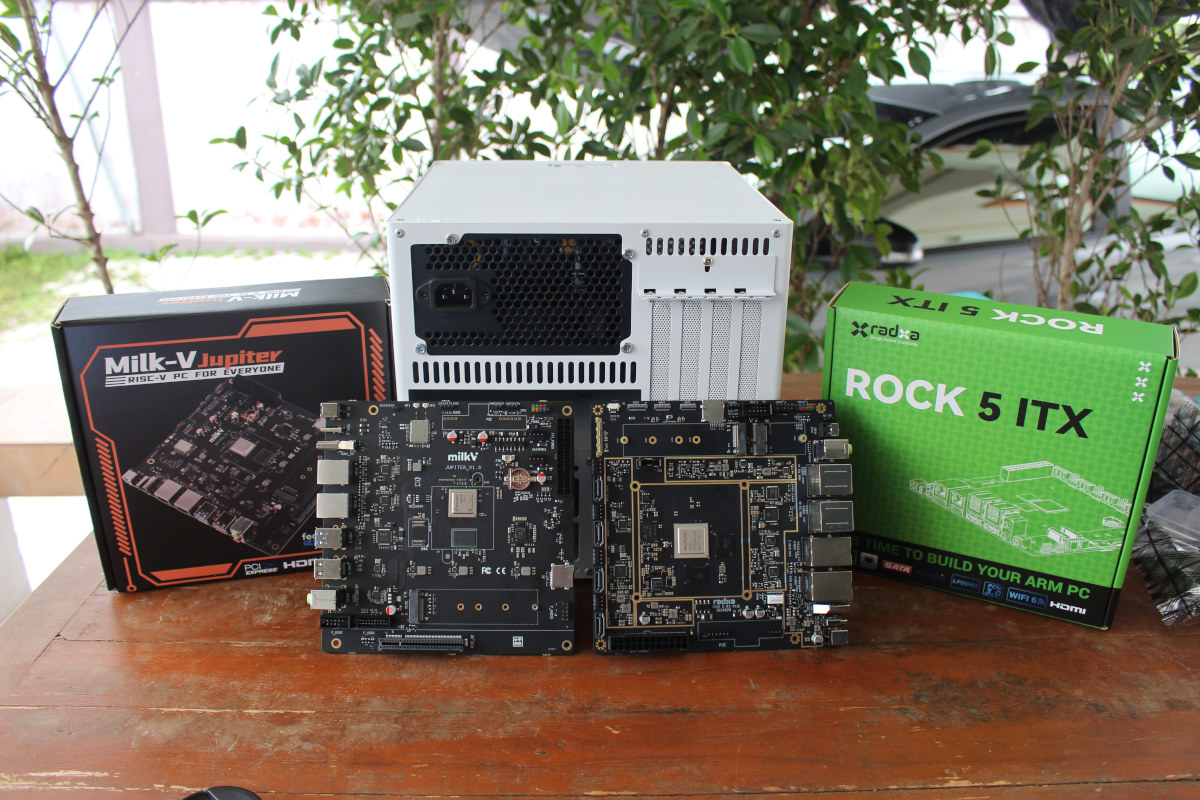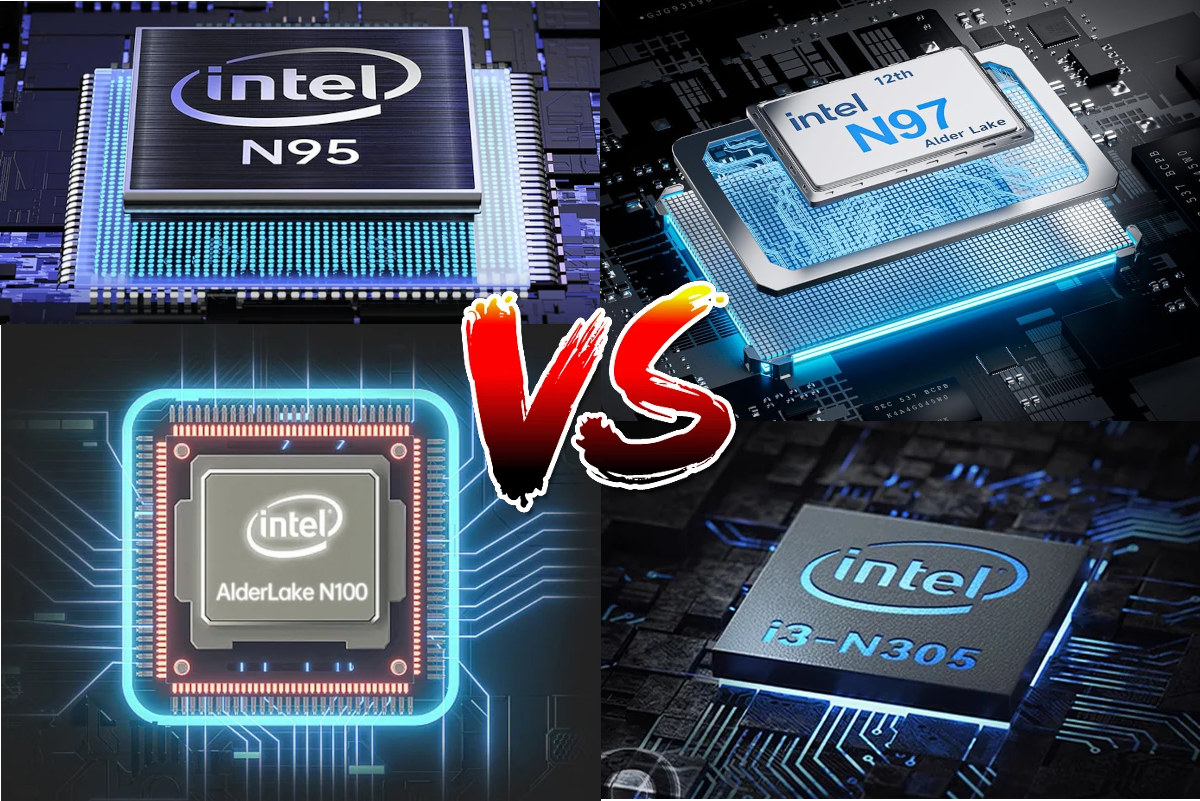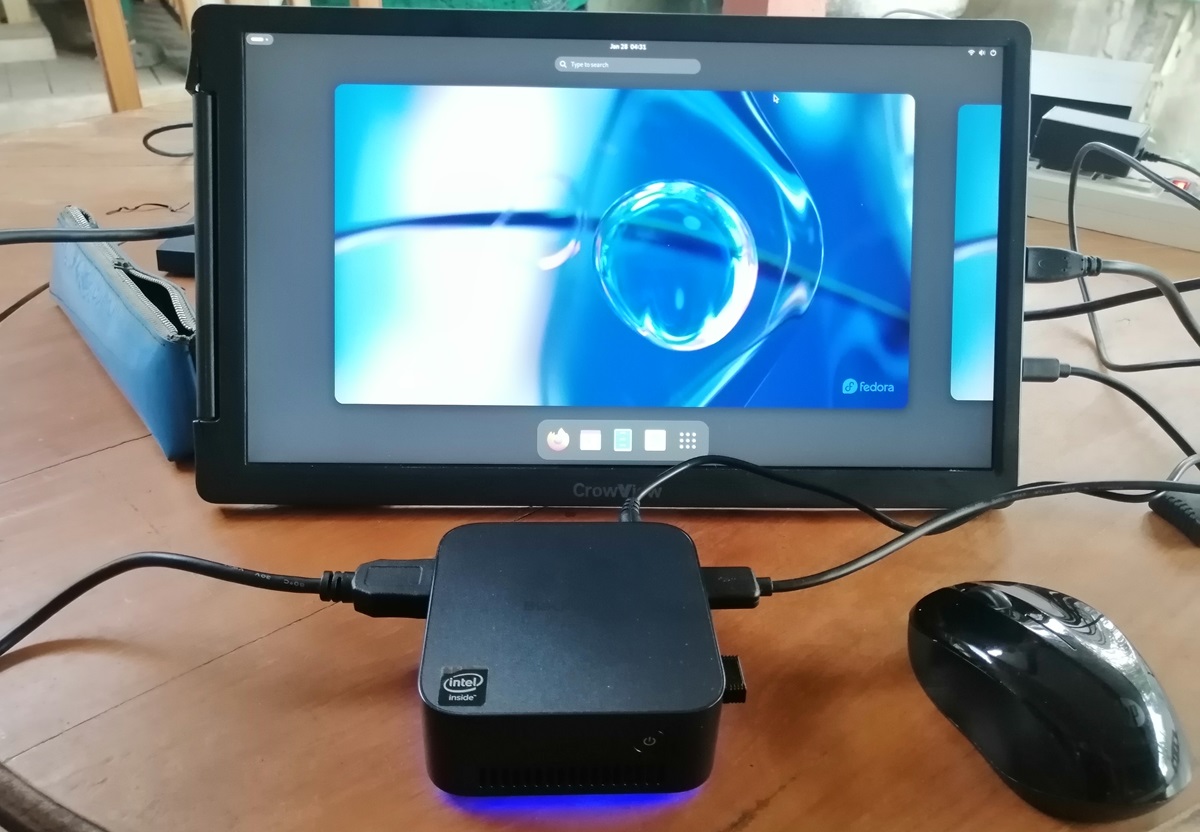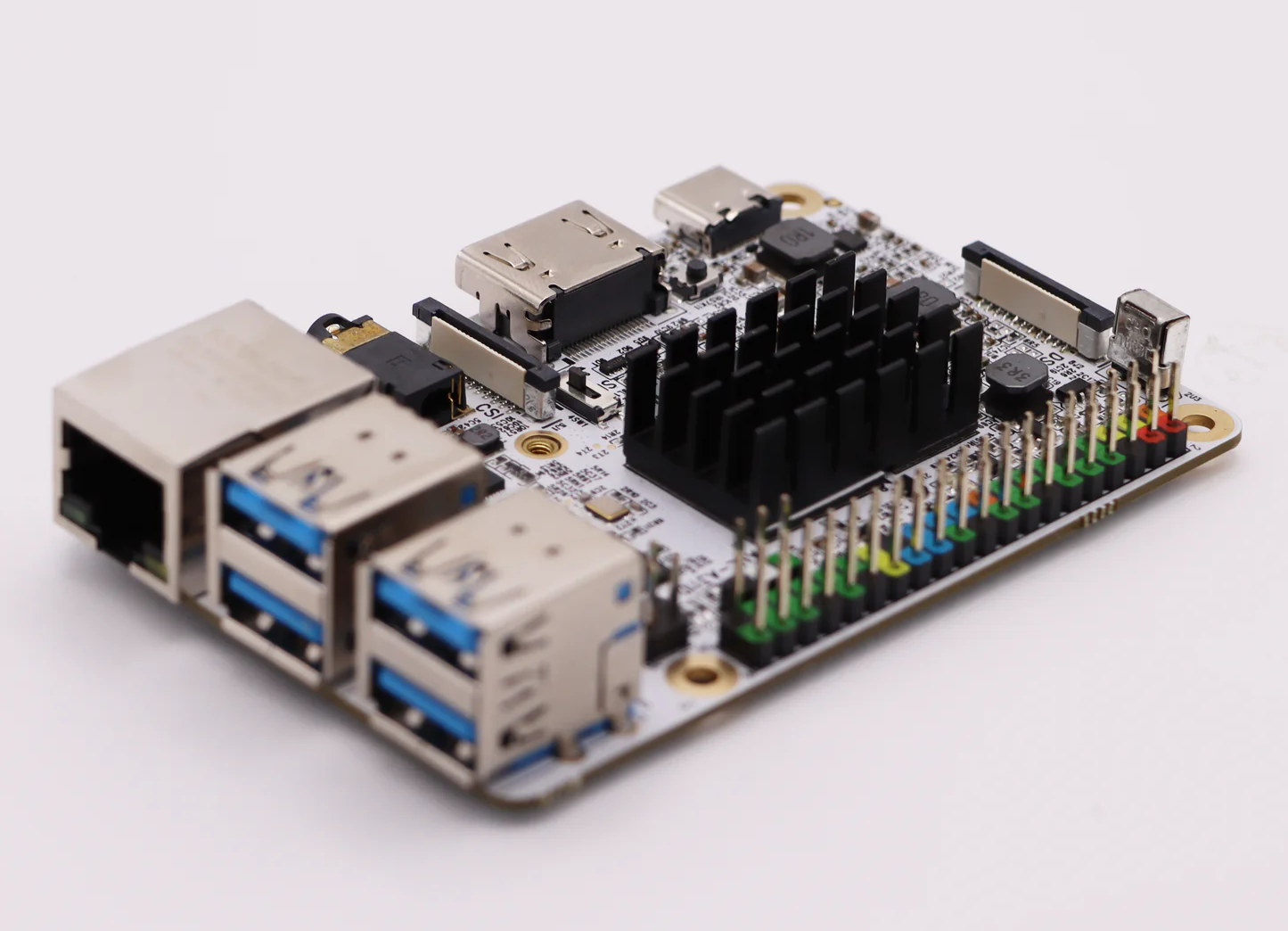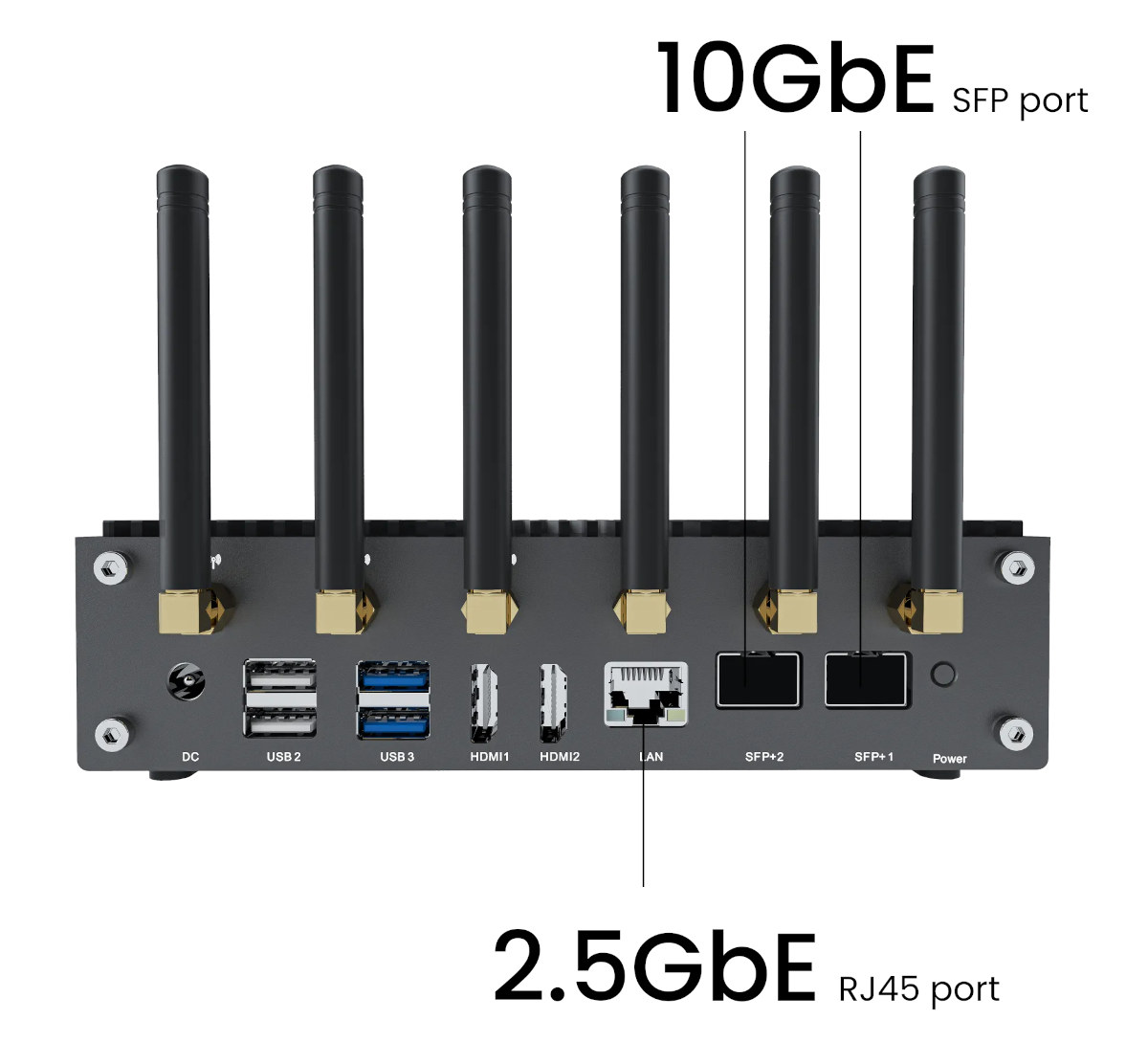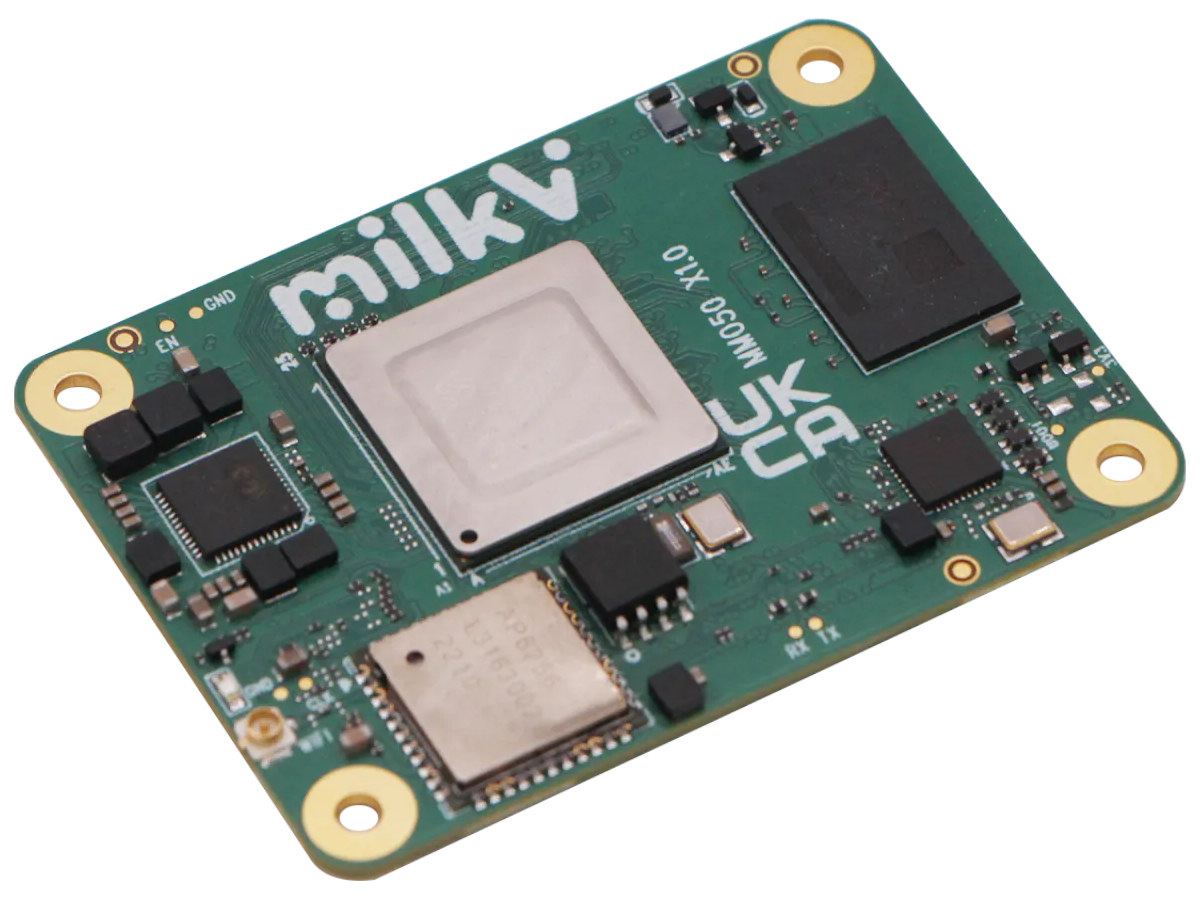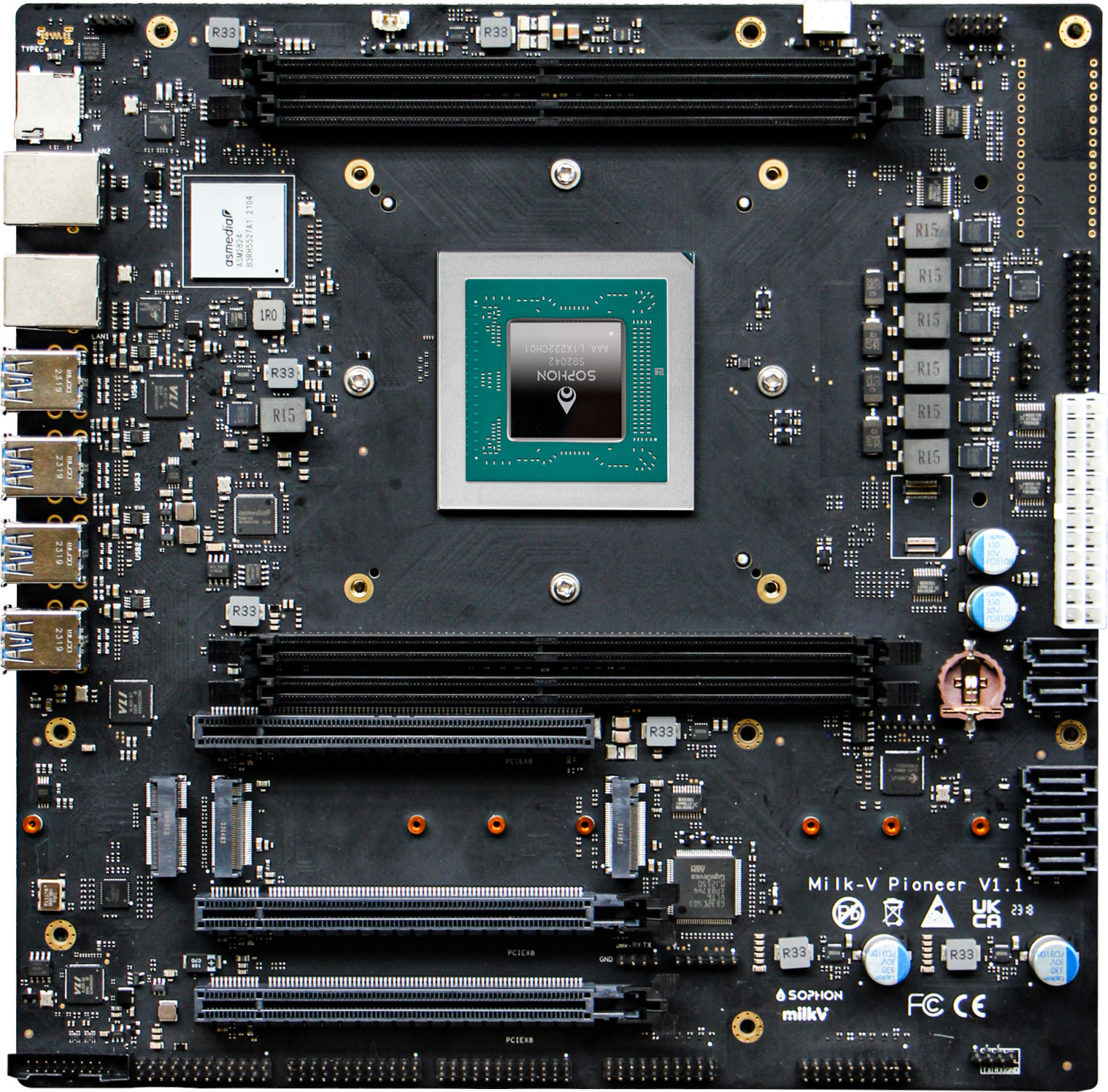Radxa ROCK 5 ITX is a mini-ITX motherboard powered by a Rockchip RK3588 octa-core Cortex-A76/A55 processor, and the Shenzhen Milk-V Jupiter is another mini-ITX motherboard, but based on SpacemIT K1 octa-core 64-bit RISC-V processor instead. When Radxa contacted me about reviewing those, I thought it would be interesting to review a complete kit with a mini-ITX case since I had never built this type of system myself. Yesterday, I was surprised to receive two large packages and thought maybe a company sent me a 3D printer or laser engraver kit, but instead, I got one package with the two Arm and RISC-V mini-ITX motherboards and another with a mini-ITX NAS enclosure with 6x SATA bays. Radxa ROCK 5 ITX unboxing Let’s look at the ROCK 5 ITX motherboard and accessories first. The motherboard ships with a rear panel and two screws for the M.2 module. The motherboard features the Rorkchip […]
Intel Processor N95 vs N97 vs N100 vs Core i3-N305 benchmarks comparison
Intel Alder Lake-N processors have been pretty popular in mini PCs and to a lesser extent in single board computers in the last year or so, thanks to their excellent performance/price and features/price ratios. All processors have more or less the same features, but performance differences do exist and do not always match the increasing part number. Since we’ve reviewed a bunch of Alder Lake mini PCs, I’ve decided to compare the performance of the Processor N95, Processor N97, Processor N100, and Core i3-N305 CPUs to have a better understanding of the differences between each part. For this purpose, we’ll rely on five mini PCs: Blackview MP80 (Processor N95), Blackview MP80 (Processor N97), the Intel N100-powered MINIX Z100-0dB and GEEKOM Mini Air12, and the Weibu N10 with a Core i3-N305 CPU. A summary of the specifications is listed in the table below. Some important remarks: Prices are taken from Amazon […]
Review of Blackview MP80 Processor N97 mini PC with Fedora 39 Linux (Part 2)
After reviewing the Blackview MP80 (Processor N97) mini PC with Windows 11 in detail, we now had time to test it with Fedora 39 Workstation to find out how well it works in Linux. In this second part of the review, we’ll explain our “choice” of Linux distribution, go through benchmarks and features testing, as well as measure fan noise and power consumption, among other test Finding a Linux distribution that works with Blackview MP80 Last year, we reviewed the Blackview MP80 model equipped with an Intel Processor N95 CPU and after the Windows 11 review, we were unable to install Ubuntu 22.04 on the machine with the company eventually telling us Linux was not supported. But several months after the review, a reader commented he could install Fedora 39 on the Blackview MP80 and that it “worked like a charm“. We thought maybe the BIOS had been updated and […]
Libre Computer AML-A311D-CC “Alta” SBC features Amlogic A311D AI processor
Libre Computer has launched the credit card-sized “Alta” SBC, also known as AML-A311D-CC, designed for AI applications with the Amlogic A311D hexa-core Arm Cortex-A73/A53 processor equipped with a 5 TOPS AI accelerator. The board comes with 4GB LPDDR4, a 16MB SPI flash for the bootloader as well as a microSD card slot and eMMC flash module connector for storage, and offers many of the same ports as found on the Raspberry Pi 3 Model B+ with Gigabit Ethernet, four USB 3.0 ports, HDMI output, an AV jack, MIPI CSI and DSI connector, and a 40-pin GPIO header that should work with most Raspberry Pi HATs. AML-A311D-CC “Alta” specifications: SoC – Amlogic A311D CPU Hexa-core processor with 4x Arm Cortex-A73 cores @ up to 2.2 GHz and 2x Cortex A53 cores @ up to 1.8 GHz Built-in Cortex-M4 core for “always-on” processing GPU – Arm Mali-G52 MP4 GPU VPU 4K UHD […]
PALMSHELL NeXT H2 SBC and micro server offers 10GbE for $199 and up
PALMSHELL NeXT H2 is an affordable AMD Ryzen Embedded R1505G-powered micro server, also available as an SBC for developers, that features two 10GbE SFP+ cages and one 2.5GbE RJ45 port, as well as expansion sockets for wireless connectivity. The system supports up to 32GB RAM plus an M.2 NVMe SSD and two SATA drives for storage, offers several wireless connectivity options with WiFi 6, Bluetooth 5.2, and 4G LTE/5G, and is equipped with two 4Kp60-capable HDMI ports, and four USB ports. PALMSHELL NeXT H2 specifications: SoC – AMD Ryzen Embedded R1505G dual-core/quad-thread processor @ 2.4GHz up to 3.3GHz with AMD Radeon Vega 3 graphics; TDP set to 25W System Memory – Optional 8GB or 16GB DDR4 @ 2400 MT/s via 2x SO-DIMM slots Storage Optional 256GB or 512GB NVMe (PCIe 3.0) SSD via M.2 Key-N 2280 socket 2x SATA III connector MicroSD card socket Video Output – 2x HDMI […]
Raspberry Pi CM4 compatible RISC-V SoM features StarFive JH7110 SoC
We’ve seen many Arm-based system-on-modules following the Raspberry Pi CM4 form factor, but we’ve now got a RISC-V one courtesy of the Milk-V Mars CM CPU module powered by a StarFive JH7110 quad-core RISC-V SoC. The RISC-V module comes with up to 8GB RAM, a 16MB SPI flash, an optional eMMC flash, onboard GbE PHY, and a wireless module with WiFi 5 and Bluetooth 5.2 plus the two 100-pin board-to-board connectors offering (partial) compatibility with carrier boards made for the Raspberry Pi Compute Module 4. Specifications: SoC – StarFive JH7110 CPU – Quad-core RISC-V processor (RV64GC) at up to 1.5GHz GPU – Imagination BXE-4-32 GPU with support for OpenCL 1.2, OpenGL ES 3.2, Vulkan 1.2 VPU H.264 & H.265 4Kp60 decoding H.265 1080p30 encoding JPEG encoder / decoder System Memory – 2GB, 4GB, or 8GB LPDDR4 Storage SDIO 2.0 (options to eMMC) 16MB NOR flash Networking Gigabit Ethernet PHY (YT8513C) […]
64-core RISC-V motherboard and workstation enable native RISC-V development (Crowdfunding)
There’s now a microATX motherboard and workstation for native RISC-V development based on the SOPHON SG2042 64-core RISC-V C920 processor with up to 128GB DDR4 memory, various SATA and M.2 NVMe interfaces for storage, three PCIe x16 slot for expansion and more. I remember a few years ago, there was a lot of talk about making a workstation for native Arm development instead of relying on x86 machines, cross-compilation, and emulation. So we got hardware like the HoneyComb LX2K, Ampere eMAG, and more recently the ADLINK Ampere Altra Dev Kit to achieve this goal. The RISC-V ecosystem is now getting something similar thanks to the Milk-V Pioneer microATX motherboard and the Pioneer Box that provides a complete 64-core RISC-V workstation with DIMM memory, SATA and NVMe storage, a graphics card, 10GbE networking, a 350W power supply, and more. Pioneer board specifications: SoC – Sophgo SOPHON SG2042 64-core RISC-V processor (T-Head […]
Use Kea DHCP server as ISC DHCP server (dhcpd) is being phased out
The ISC DHCP server (dhcpd) was traditionally used to set up a DHCP server in Linux, but the software is reaching end-of-life, and the Internet Systems Consortium is now recommending their own Kea DHCP server or alternatives such as Dnsmasq or udhcpd (as found in Busybox) as a replacement. I was unaware of this having just used the isc-dhcp-server package to set up a DHCP server in NanoPi R6C router/mini PC earlier this month. But a blog post on Ubuntu informed us dhcpd was going away, and Canonical plans to switch over the Kea DHCP server instead. The main difference from the user perspective is that Kea relies on JSON configuration files so all your dhcpd files will have to be rewritten. Other highlights for the Kea DHCP server include: Modular component design, extensible with hooks modules. Kea includes daemons for a DHCPv4 server, a DHCPv6 server, and a dynamic […]


